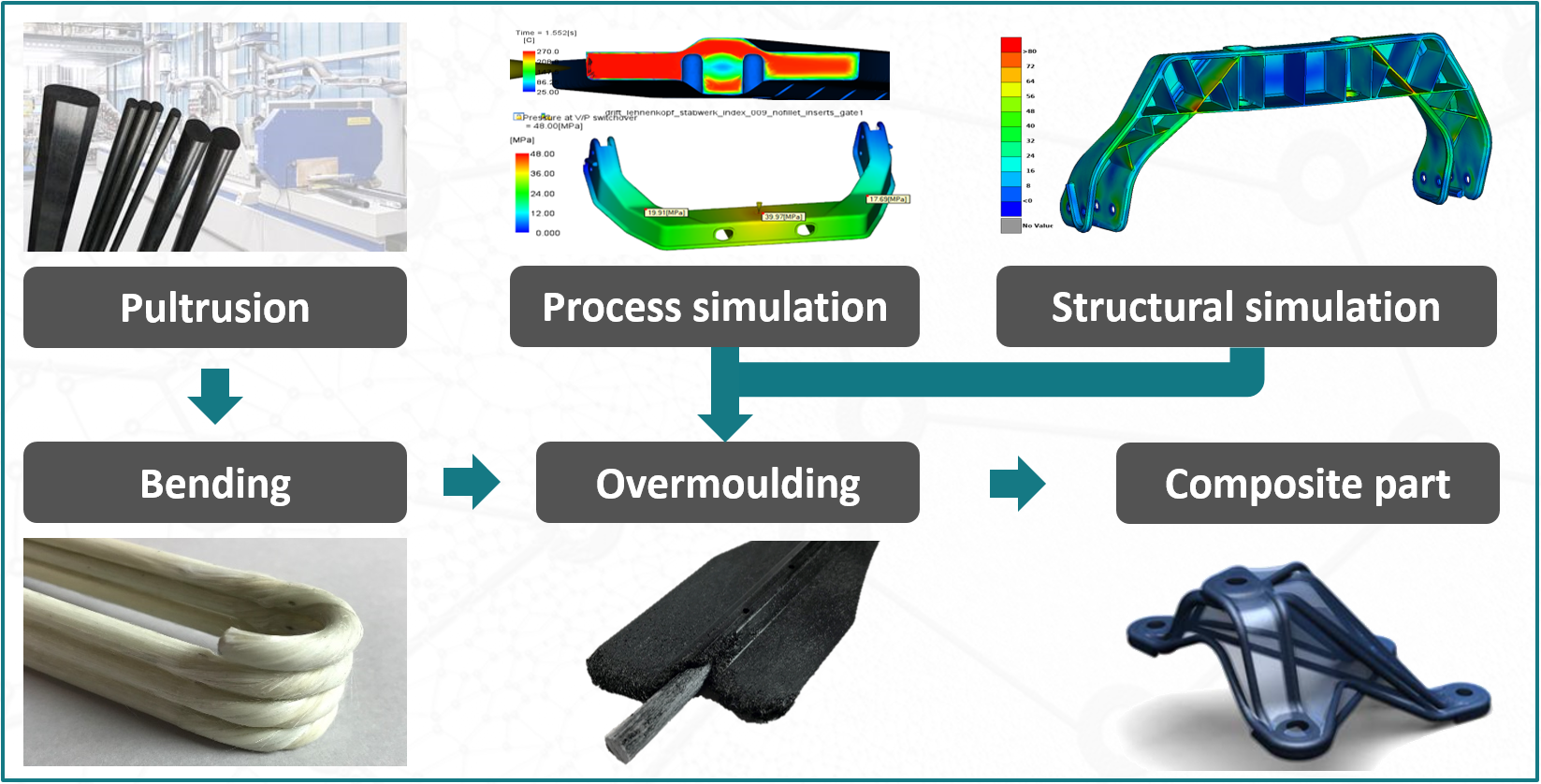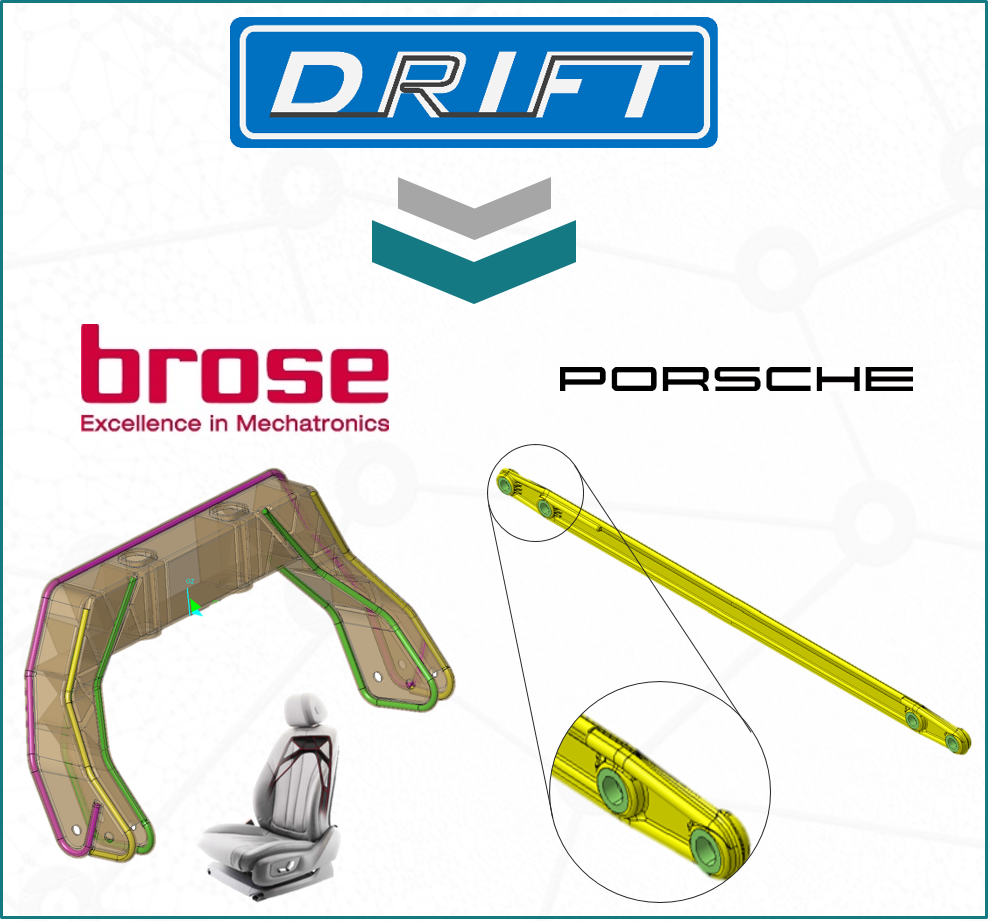The DRIFT process route
Glass fibers and especially carbon fibers act as ideal reinforcements for plastic components due to their excellent weight-specific mechanical properties. However, in order to achieve an effective reinforcing effect, the fibers must be embedded in the component along the main load path direction. Traditional methods always require a carrier (e.g. a mold or support structure) with which the fibers can be deposited in the desired orientation. However, this is not necessary with DRIFT technology.
The special feature of the DRIFT process is the combination of various established processes that have been tried and tested in other areas of application. DRIFT technology combines pultrusion, the automated bending process and injection molding into an integrated overall process chain (see illustration below). This enables synergistic use of the advantages of the individual technologies. The use of machine-bent pultruded profiles as continuous fiber-reinforced wire-shaped inserts is a central element of the reinforcement process. Machine bending can be used to create a »3D carbon skeleton« of almost any shape, which is then inserted into an injection mold and overmolded in order to achieve a load path-compatible reinforcement.



